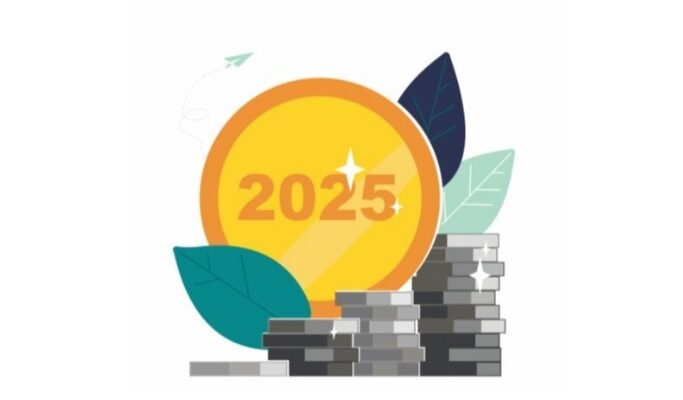Credit on the rise, despite interest rates: the first projections for 2025
In our last article, we took stock of 2024. We highlighted the positive performance of economic activity and the persistence of inflationary pressure, which led to changes in the path of the basic interest rate. We also dealt with the credit growth cycle in Brazil, especially in the personal loans segment. Now it's time to outline the outlook for 2025. The exercise of projecting the future, although inherently limited by uncertainty, is important because it helps to direct our gaze towards the risks and opportunities that lie ahead.
We started the year knowing, for example, that the evolution of the external scenario will merit special attention. There is uncertainty about the pace of disinflation in the world's main economies, which could lead to an increase in foreign interest rates. This would put additional pressure on the dollar, with repercussions for inflation and interest rate policy in Brazil. In the event of a sharper slowdown in inflation, the external pressures would be mitigated. As the Central Bank pointed out in he minutes of the last COPOM meeting show that the external situation calls for caution on the part of emerging countries.
On the international scene, we also have other points to watch out for: the tariff policy to be adopted by the United States will be crucial for inflation in that country and all the international repercussions that an eventual acceleration in prices could bring As for the United States, for now we only know the intentions expressed in the election campaign. We will therefore have to wait for a more concrete plan to be presented. In addition, ongoing conflicts could also have an impact on the trajectory of the global economy. The impacts of these conflicts are manifested in the economic dimension through uncertainties in the supply chain and internal and social insecurity in countries, negatively affecting the capital and credit markets. Another relevant point is climate phenomena, which at a global level had an economic cost of USD 320 billion in 2024, with an increase of around 30% compared to 2023. Brazil has also been affected by droughts and floods.
Domestically, 2025 inherits some of the challenges of 2024. The most urgent is to rescue the credibility of fiscal policy. Congress approved the fiscal package presented by the government with a few changes that dehydrated the original proposal. Therefore, the fiscal agenda will still deserve attention, especially when we think about the medium term. The assessment of important risk agencies is that the fiscal package needs to be complemented with additional cutting measures. Restoring fiscal credibility would be a strong ally of the Central Bank in the task of anchoring inflation expectations. In the best-case scenario, "re-anchoring" could lead to a shorter cycle of interest rate hikes.
The projections presented by the Focus Bulletin show the "unanchoring" of inflation. At the beginning of December 2024, the market forecast for the change in the IPCA in 2025 was 4.6%. In the first bulletin released this yearNow, the forecast is 5.0%, which would put the rate above the target ceiling set by the National Monetary Council (CMN). As a result, projections for the SELIC rate have also risen: according to the Focus Bulletin, the basic rate should reach 15.0% by the end of 2025.
For economic activity, the projections indicate a slowdown in growth. Slowing down means, in this case, growing less than the country did in 2023. The forecast for global GDP growth in 2025 is 2.6% and for emerging economies 3.9%. Brazil's projected GDP growth is 2.0%, according to the Focus Bulletin. It's worth considering that, over the last few years, economic activity has consistently surprised us. Yes, that may sound like a contradiction in terms. The fact is that, since the beginning of the recovery from the pandemic, GDP growth has been higher than the initial projections. If the slowdown were to be confirmed, there would be a brake on the fall in unemployment and the growth in average income.
The less favorable economic climate may have implications for the evolution of defaults and credit. In recent years, we have seen a cycle of credit growth, especially in the personal loans segment. It was this cycle that brought the credit-to-GDP ratio to 54.0% in November 2024 - the highest level since the beginning of the historical series presented by the Central Bank. As we have already pointed out in this space, the reasons for the growth in credit go beyond the economic situation and reflect a set of measures aimed at modernizing the Brazilian credit market, reducing information asymmetries and stimulating competition.
For the same reasons, despite the expected rise in interest rates, projections collected by FEBRABAN point to a growth of 9.0% in the credit balance. Although this growth is lower than that projected for 2024, it is worth noting that the pace of progress remains significant.
The credit bureau sector reiterates its mission to help expand access to the financial system's resources, so that companies can invest and consumers have credit as a viable and cheaper option, always encouraging, of course, credit discipline. In the coming months, the sector will continue to monitor the credit environment and contribute to the modernization of this market. We hope that in 2025 the country will be able to take new steps towards the democratization of credit.
Thanks for reading! Access other content at ANBC website.



